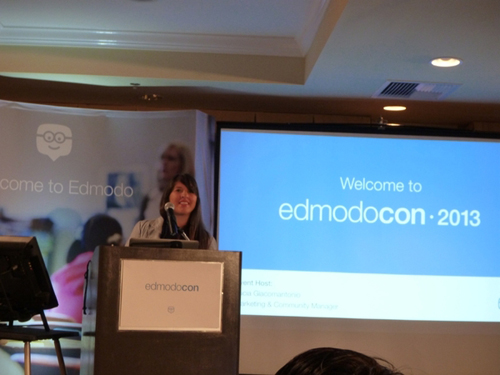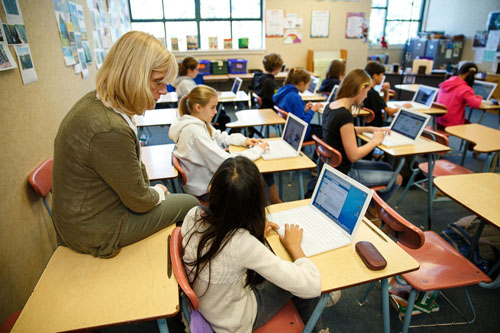According to OECD Education Indicators in Focus, “Higher Education financing systems that charge a moderate level of tuition fees — combined with student financial support systems that offer loans with income-contingent repayments and means-tested grants — may stand a better chance of promoting access, equity, completion, and positive outcomes for students.”
The problems faced in order to achieve this goal or something close to it include surging costs in higher education, an increasing number of students relying on loans to pay for schooling, an increasing number of students burdened with debt (1 in 5 American households are burdened with student debt), and tightly constrained education budgets. Another question being raised by families is, “Will the enormous investment in time and money students being asked to make in higher education pay off?” The graduate unemployment rate in the U.S. now stands at a shocking 14 percent, and according to a recent report by The Wall Street Journal there were 284,000 graduates with a bachelor’s degree or higher working minimum wage jobs last year (up 70 percent from a decade ago). A recent McKinsey and Chegg report indicated that nearly half of college graduates polled regretted their decisions related to higher education. Difficult facts for anyone to swallow — somewhat tolerable when family can afford your education and support your ongoing living expenses indefinitely — grossly unfair to the majority of American families who can’t.
How does the cost of higher education in the United States compare to other countries? According to Global Higher Education Rankings (GHER) 2010, education costs in most countries range between 5 and 20 percent of median income. Norway’s higher education system is the least expensive, with educational costs at just over 2.2 percent of median income level. Denmark, Sweden, Germany, France and Finland are all under 6 percent. Canada, New Zealand, The Netherlands, England and Wales, and Latvia are all under 25 percent. By comparison, the United States is one of the most expensive markets, with education costs over 51 percent of median income. What about living costs? Surprisingly, the United States again is one of the most expensive markets in the survey, ranking third after Japan and Australia. [Data for the United States figures in the GHER research is based partly on data from the College Board’s annual Trends in College Pricing (for room and board) and partly from the International Comparative Higher Education Finance and Accessibility Project (for everything else).]
There are efforts underway to reduce higher education costs and improve graduation rates, but I believe the impact will be limited. Let’s not forget, we are starting at a very high level of education costs, i.e. 51 percent of median income. We need a game changer or a disruptive innovation that could make a significant difference in affordability and accessibility for students. I believe that will ultimately be an online higher education model. There are challenges to overcome. Online education is still at the beginning of the quality curve with a way to go, but it will get there. We also know that the real power of technology lies in its ability to meet each individual’s unique learning requirements. That alone is making new converts in the world of education every day. It does not have to be bricks versus clicks. Blended learning models continue to expand and improve at every level of education. We can significantly lower student costs with a blended system and we can serve a much larger population of students.
I believe this is the kind of solution that will allow us to remain competitive globally. After all, once upon a time we went to bookstores. Now we go to the internet. Or we customize a blend of the two that works for each of us individually.
In The Global Search for Education, join me and globally renowned thought leaders including Sir Michael Barber (UK), Dr. Michael Block (U.S.), Dr. Leon Botstein (U.S.), Professor Clay Christensen (U.S.), Dr. Linda Darling-Hammond (U.S.), Dr. Madhav Chavan (India), Professor Michael Fullan (Canada), Professor Howard Gardner (U.S.), Professor Andy Hargreaves (U.S.), Professor Yvonne Hellman (The Netherlands), Professor Kristin Helstad (Norway), Jean Hendrickson (U.S.), Professor Rose Hipkins (New Zealand), Professor Cornelia Hoogland (Canada), Honourable Jeff Johnson (Canada), Mme. Chantal Kaufmann (Belgium), Dr. Eija Kauppinen (Finland), State Secretary Tapio Kosunen (Finland), Professor Dominique Lafontaine (Belgium), Professor Hugh Lauder (UK), Professor Ben Levin (Canada), Lord Ken Macdonald (UK), Professor Barry McGaw (Australia), Shiv Nadar (India), Professor R. Natarajan (India), Dr. Pak Tee Ng (Singapore), Dr. Denise Pope (US), Sridhar Rajagopalan (India), Dr. Diane Ravitch (U.S.), Richard Wilson Riley (U.S.), Sir Ken Robinson (UK), Professor Pasi Sahlberg (Finland), Andreas Schleicher (PISA, OECD), Dr. Anthony Seldon (UK), Dr. David Shaffer (U.S.), Dr. Kirsten Sivesind (Norway), Chancellor Stephen Spahn (U.S.), Yves Theze (Lycee Francais U.S.), Professor Charles Ungerleider (Canada), Professor Tony Wagner (U.S.), Sir David Watson (UK), Professor Dylan Wiliam (UK), Dr. Mark Wormald (UK), Professor Theo Wubbels (The Netherlands), Professor Michael Young (UK), and Professor Minxuan Zhang (China) as they explore the big picture education questions that all nations face today. The Global Search for Education Community Page
C. M. Rubin is the author of two widely read online series for which she received a 2011 Upton Sinclair award, “The Global Search for Education” and “How Will We Read?” She is also the author of three bestselling books, including The Real Alice in Wonderland.






Recent Comments